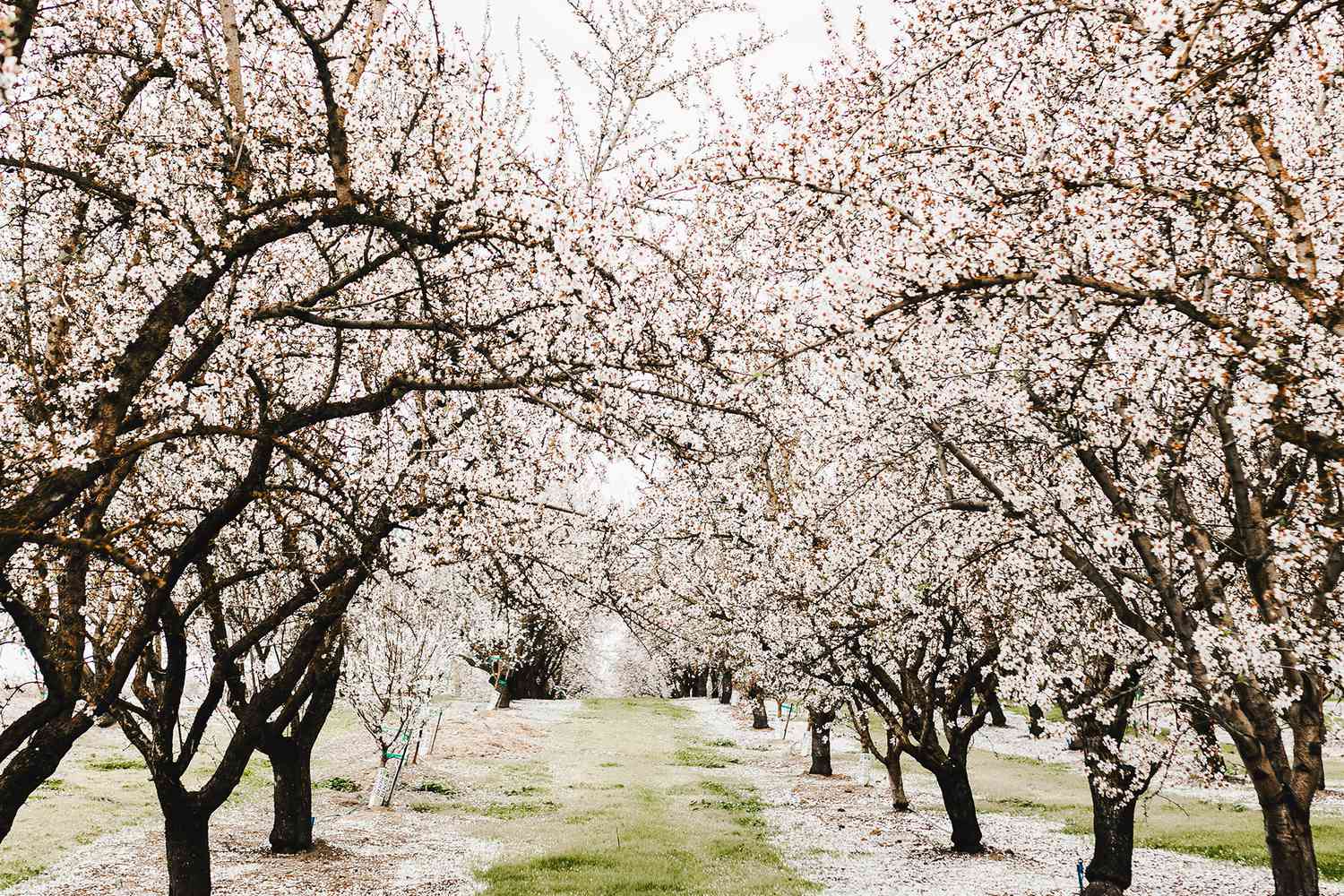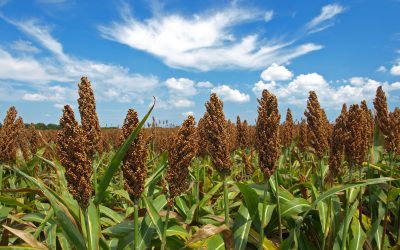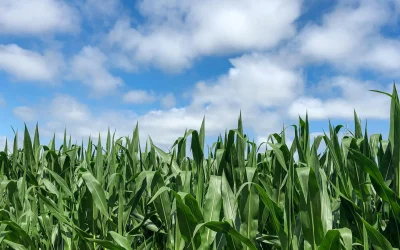Key Takeaways
- The U.S. is a global leader in tree nut exports. Almonds account for the largest share, with nearly one billion pounds shipped annually, the majority of which are grown in California.
- Almond trees require 40–58 inches of water annually to achieve optimal yield and quality. Strategic irrigation is crucial, particularly during the early growth and fruit development stages.
- Drought, regulatory restrictions and limited water supplies make efficient irrigation management a top priority for California almond growers.
- When timed properly, deficit irrigation during hull split can reduce hull rot by up to 90%, improve harvest ease and lower overall water use.
- Poor water infiltration, saline water sources, nutrient leaching and compaction are all challenges for effective almond irrigation.
- Effective irrigation scheduling must consider soil texture, weather conditions and the crop’s growth stage to ensure trees get the right amount of water at the right time.
- Over 80% of California almond growers use microirrigation (drip or microsprinklers) to apply water directly to the root zone.
- In almond orchards, TerraFlow®-treated almond trees required 30% less irrigation water and 20% less fertilizer and pesticide inputs. Treated trees also experienced less plant stress and demonstrated stronger seasonal growth performance compared to trees receiving untreated irrigation water.
The United States is the leading country in tree nut production and exports, supplying over one-tenth of the global tree nut supply.1 Almonds represent the largest portion of U.S. tree nut exports, with nearly one billion pounds shipped each year.1

Source: USDA, Economic Research Service, using data from U.S. Department of Commerce, Census Bureau.1
Most of those exported almonds are grown in California, where water availability is one of the top production challenges growers face. While significant progress has been made in conserving water in U.S. almond orchards, the industry has an ambitious goal to further reduce water use by 20% by the end of 2025.2 Optimizing irrigation strategies is crucial to helping growers achieve this goal. Let’s explore the importance of efficient water management in almond production and learn how TerraFlow® is changing the game for precision almond irrigation.

Source: California Almond2
Importance of Water in Almond Growth
Almond trees can survive on as little as 7.6 inches of annual moisture, but they require between 40 and 58 inches of water per year to maximize yield and quality potential.2,3,4

Source: University of California, Division of Agriculture and Natural Resources as cited in California Almonds2,5
A lack of sufficient moisture affects almond trees in different ways, depending on the growth stage.
- Early season (Bud break through fruit set)
- Early-season water stress can reduce shoot growth and development, which affects the fruiting position for the next season’s crop.
- Water stress also slows leaf growth and photosynthesis, limiting the amount of carbohydrates available to maximize yield.
- Starting the season with a near-full soil water profile can alleviate these crop stresses.
- Fruit growth and development
- Water stress during fruit development should be avoided, as the crop is most susceptible to drought during this time.
- Large water deficits can put almond crops at risk of delayed hull split, making the crop more vulnerable to hull rot and navel orangeworm pests.6
- Post harvest
- Almond trees can generally tolerate more water stress post-harvest, but shallow or drip-irrigated soils require proper water management to maintain the next season’s crop.
While insufficient moisture is certainly a yield threat, too much water is also a problem for an almond crop. Excessive moisture can lead to nutrient leaching, poor root growth and an increased risk of plant diseases, such as crown rot and root rot.
Deficit irrigation is a practice used by almond growers to induce controlled plant stress by reducing water application. Used during hull-split, deficit irrigation can help improve water use efficiency and enhance fruit quality and harvest ease. Properly timed and applied irrigation deficit can reduce hull rot by 80-90%.7 It’s also a practical way to reduce water consumption when water availability is limited.
Timely and well-managed irrigation can help ensure the crop receives the optimal amount of moisture during critical development stages to optimize almond yield and quality potential. Maintaining optimal soil moisture—without oversaturation—is key.
UpTerra’s water-enhancing technology, TerraFlow, improves irrigation water distribution in the soil, ensuring the almond tree has access to moisture and nutrients at critical growth stages. TerraFlow is a plug-and-play device that is compatible with most almond irrigation systems. It uses patent-pending vortexing and frequency transmission technologies to energize and enhance irrigation water, making it more hydrating for growing trees and the soil.
Common Irrigation Challenges in Almond Orchards
Almonds are a relatively water-intensive crop, so effective irrigation management plays a crucial role in maximizing crop yield and quality potential. However, almond irrigation comes with challenges that growers must be aware of and manage.
Water availability
In California, where a majority of the world’s almonds are grown, water availability is a significant concern for almond growers. Consecutive years of drought, combined with water-use restrictions, have made it more challenging for almond growers to optimize their productivity.
Water quality
Irrigation water quality is also an issue for almond growers, as tapped out wells have had to reach deeper groundwater levels with higher salt content. Higher salinity irrigation water poses a significant threat to productivity, with some almond farmers reporting yield losses exceeding 30 percent when using saline water sources.8 UpTerra’s TerraFlow device has been shown to mitigate the effects of saline soils by enhancing water movement to leach salts.9
Poor soil infiltration
Poor soil infiltration is another challenge almond growers face. Compaction, mineral loss in the upper soil layer, poor water quality or other factors can reduce water’s ability to move through the soil. This not only decreases irrigation efficiency but also poses a risk to crop development. Almond growers can take steps to remedy soil infiltration issues, including adding gypsum, adjusting irrigation frequency or improving the water source. TerraFlow technology has been shown to significantly improve water infiltration in the soil by up to 200% at 30” depths.10
Nutrient leaching
Deep watering in almond orchards can increase the risk of nutrient leaching, compromising the plant’s access to vital nutrients. UpTerra’s TerraFlow technology enhances the physical and chemical properties of soil, improving biological activity and nutrient cycling. In field trials, it has demonstrated a 30% increase in organic nitrogen release, improved carbon balance and more favorable organic matter ratios in California almond crops.10
Factors Influencing Water Needs
Developing an irrigation strategy is a fluid process that must adapt to the crop’s needs. Some factors that influence an almond crop’s moisture requirements include:
- soil type
- weather conditions
- crop growth stage
Soil texture affects water retention and drainage, influencing the amount of plant-available water and the frequency of irrigation. Climate variables, such as temperature, humidity and rainfall patterns, also affect water requirements. The almond crop also has different moisture needs depending on the growth stage. To optimize the almond irrigation strategy, consider all these factors in your watering schedule.
Calculating Almond Water Use
The water use requirements of almond trees can be estimated using a simple equation: ETc = ETo x Kc, where ETc is inches of water used, ETo is crop evapotranspiration rate and Kc is a crop coefficient that varies depending on the almond tree’s growth stage.
Many almond growers refer to CIMIS, the California Irrigation Management Information System, to estimate crop water demand. CIMIS uses hundreds of weather stations throughout California to calculate real-time evapotranspiration rates (ETo), which growers can reference to estimate their irrigation requirements. The Almond Board of California provides additional resources on estimating water use and irrigation scheduling.
Best Practices for Almond Irrigation
To conserve water and optimize almond crop health, growers should consider these best practices when irrigating.
- Use soil moisture sensors to monitor real-time soil moisture conditions and adjust irrigation events accordingly.
- Irrigate early in the day to reduce evaporation loss.
- Alternate row irrigation as a potential water-saving method during drought.
- Use frequent, light watering instead of deep, infrequent irrigation, depending on the root stage.
- Maintain irrigation systems to prevent clogging and pressure variations.
- Address dry winters and prevent crop stress with winter irrigation.
- Test the irrigation water and soil to determine when salinity leaching is necessary.
Almond Irrigation Systems & Methods
There are several types of irrigation systems used in almond production, each offering different benefits and limitations. Finding the most efficient irrigation system will depend on factors such as orchard size, water source and budget.
Microirrigation
More than 80% of California almond farms use microirrigation, including drip and microsprinkler systems.2,11 These types of systems maximize irrigation efficiency by applying water directly to the root zone of each tree, reducing evaporation and runoff risks. Microirrigation may also help reduce the risk of pest and disease infestations that can result from overwatering. Drip and microsprinkler systems typically require a higher initial investment than traditional sprinkler irrigation systems.
Sprinkler irrigation
Traditional sprinkler irrigation is also used in almond orchards, utilizing a network of pipes, sprinklers and emitters to provide overhead watering. Sprinkler irrigation is a versatile option that can be particularly beneficial for larger orchards. One benefit is that it provides a cooling effect, reducing heat stress and potentially improving fruit quality. However, sprinkler irrigation is less efficient than microirrigation methods, such as drip or microsprinkler systems, so more water may be lost to evaporation or runoff.
Irrigation Water Enhancement for Almonds
One of the newest innovations in almond irrigation technology is water enhancement. UpTerra is helping orchard managers optimize irrigation management with TerraFlow.
With TerraFlow, water spreads more evenly across and into the soil profile, improving infiltration and retention across tree rows. A more consistent moisture distribution has numerous agronomic advantages, including improved nutrient uptake, increased microbial activity in the root zone, reduced plant stress and healthier soils. Over time, these synergistic benefits enable almond growers to produce more with fewer inputs.
What can TerraFlow do in your orchard?
- Reduce applied irrigation water by 30% (35,000,000+ gallons saved)10
- Reduce applied fertilizer and pesticide inputs by 20% ($37,000 saved)10
- Reduce plant stress and improve plant vigor10
- Increase stored soil moisture10
- Exceed average seasonal growth projections10
Smarter Irrigation Starts Below the Surface
Almond production is a cornerstone of U.S. agriculture, with California at the epicenter of global supply. As growers strive for ambitious water conservation goals, efficient irrigation has never been more crucial. From the early-season needs of almond trees to the challenges of managing salinity, nutrient leaching and soil infiltration, effective water management is key to sustaining yield, quality and profitability.
UpTerra’s TerraFlow water enhancement technology is reshaping the way almond growers irrigate. By improving water infiltration, retention and nutrient availability, TerraFlow empowers growers to optimize water use while reducing inputs and enhancing crop resilience.
If you’re looking to improve water efficiency without sacrificing yield, consider how UpTerra can support your orchard’s long-term success. Contact us to explore solutions tailored for your orchard.
* Results based on field trials conducted by UpTerra with partner farms comparing fields treated with TerraFlow irrigation water and untreated irrigation water.
References
1 USDA Economic Research Service. Almonds Account for the Largest Share of U.S. Tree Nut Exports [chart]. USDA ERS Charts of Note. 2012.
2 Almond Board of California. Do Almonds Use a Lot of Water?
3 Shackel KJ, Edstrom A, Fulton B et al. Drought Survival Strategies for Established Almond Orchards on Shallow Soil. Modesto: 2011-2012 Annual Report to the Almond Board of California.
4 Sanden B. Fall Irrigation Management in a Drought Year for Almonds. Bakersfield, CA: University of California Cooperative Extension: Kern Soil and Water. 2007.
5 Schwankl L, et al. Understanding Your Orchard’s Water Requirements. University of California, Division of Agriculture and Natural Resources. Publication 8212. 2010.
6 Sacramento Valley Orchards. Hull Tights Caused By Water Stress. 2021.
7 Almond Board of California. Almond Irrigation Improvement Continuum. 2020.
8 U.S. Department of Agriculture, Agricultural Research Service. Saltier Groundwater Does Long-Lasting Damage to Almonds, But Less Than Previously Feared. 2022.
9 UpTerra third-party research conducted with MARI Agricultural Research Institute.
10 UpTerra field trial data
11 California Almond Stewardship Platform. November 2023.



